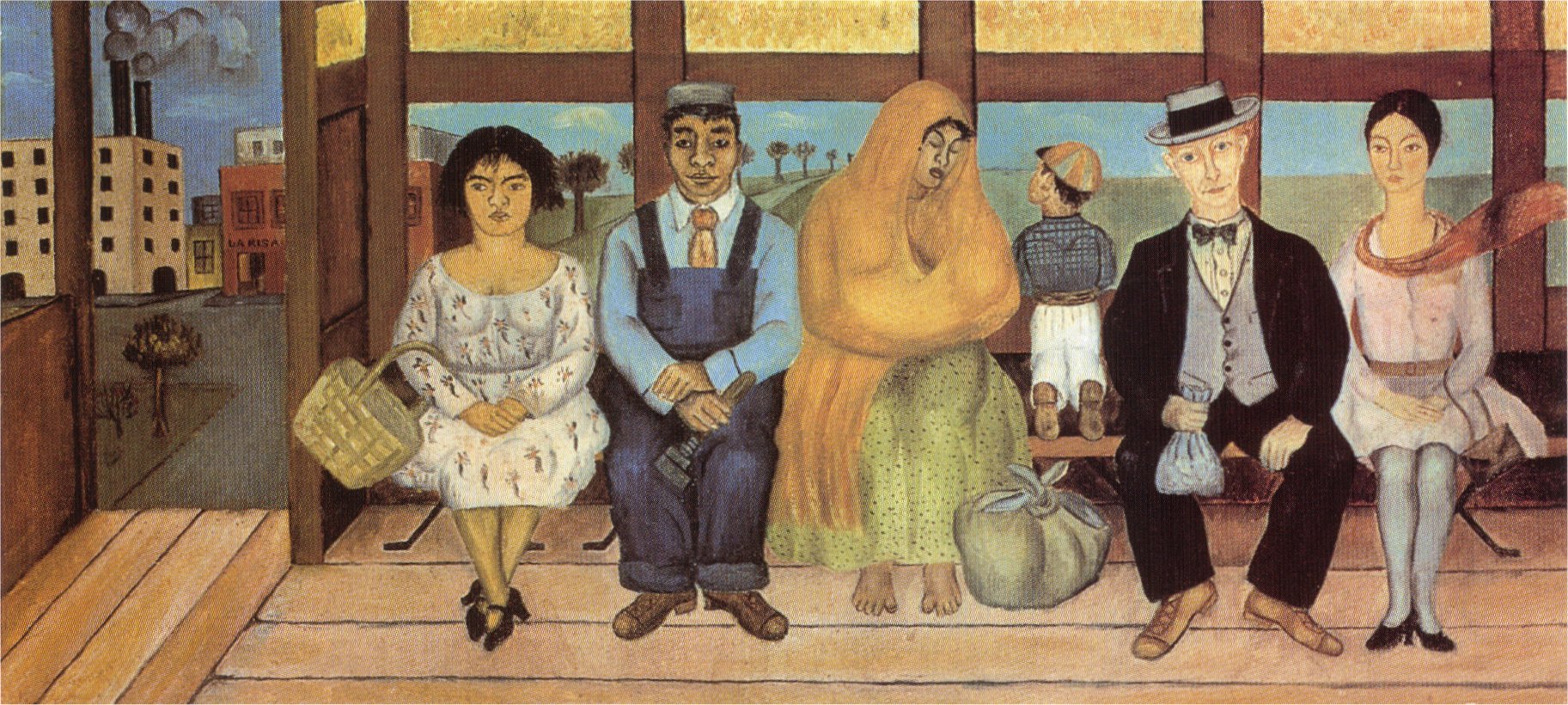Young Frida was only 18 when, returning home, was involved in a terrible accident with a tram. Out of the hospital, she was forced to rest in bed for years with her torso in a plaster cast. This misfortune and the pain that arose from marked indelibly her body, her soul, and her own art. In the work, painted only four years after the accident, Kahlo is represented as a young woman sitting on the tram with a red shawl; in the background – near the smoking chimneys of a factory – a small tavern, La Risa, celebrates the incident with sarcasm and black humor.La Risa, celebrates with sarcasm and black humor the terrible event.
The stimulus to Art and creativity often arise just behind a period of emotional turmoil and/or suffering. The German philosopher Nietzsche, inferring philosophically to the effects of pain on the human soul, wrote that the most intense and profound suffering ennobles the soul given that, by slowly burning, penetrates inside bringing us, naturally, the deeper, more harsh questions. To these words, like others before us, we would like to accost those of one of the greatest translators of anguish and disturbance in artistic expression: Edvard Munch. It was the opinion of the Norwegian painter that any form of Art would be born or, at least, receive a boost from profound research of the self and from the desire to open themselves, by providing to the creative act the same blood of our heart.
We can’t say that Art is the exclusive matter of suffering or introspection, or of serenity and carefree, certainly not as an absolute. Today there is another word we have chosen to convey, at the best, that what for us represents the Art of Frida Kahlo: passion.
A word that expresses both the fire of the pain that burns consumes us both that of love that with the same vigour builds the spirit and feeds the art.
Frida Kahlo,
The Bus,
1929,
Oil on canvas,
25.8 x 55.5 cm,
Mexico City, Dolores Olmedo Collection
